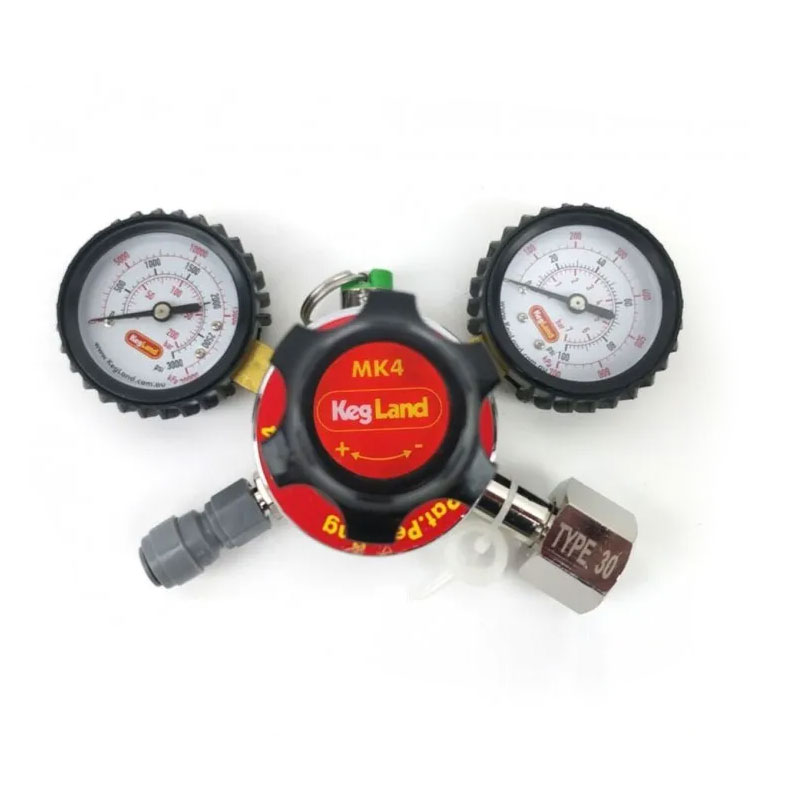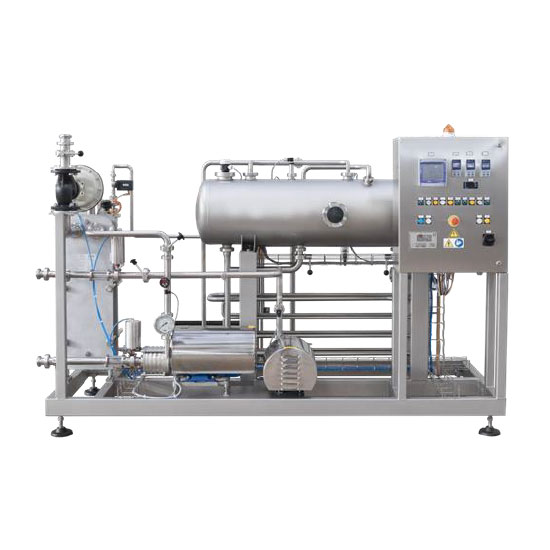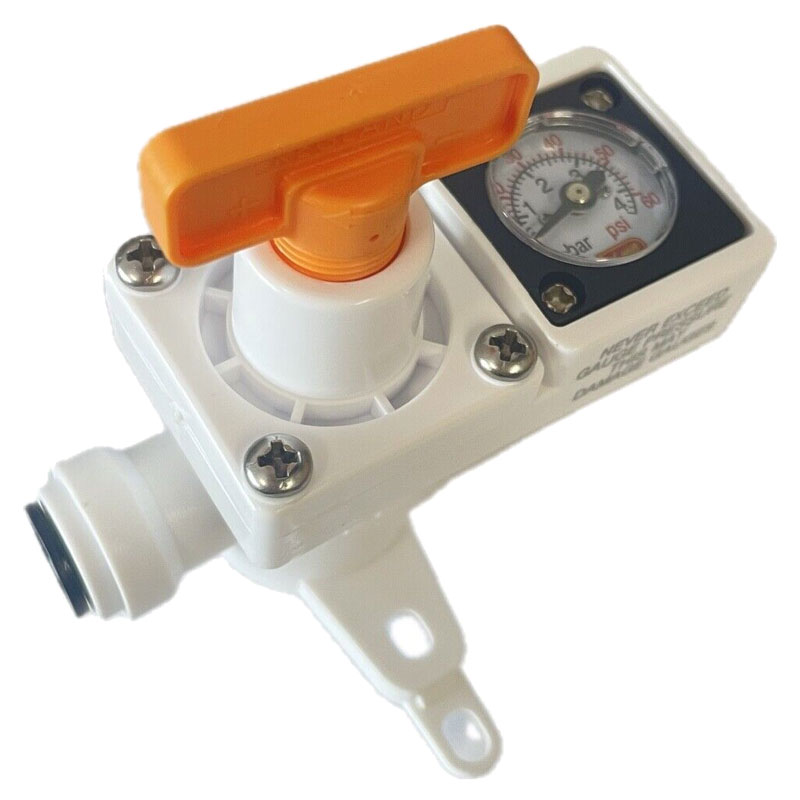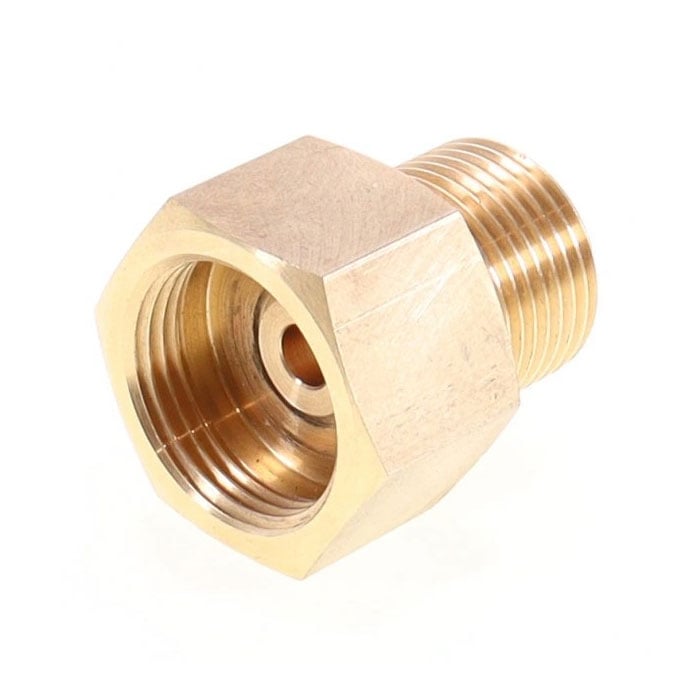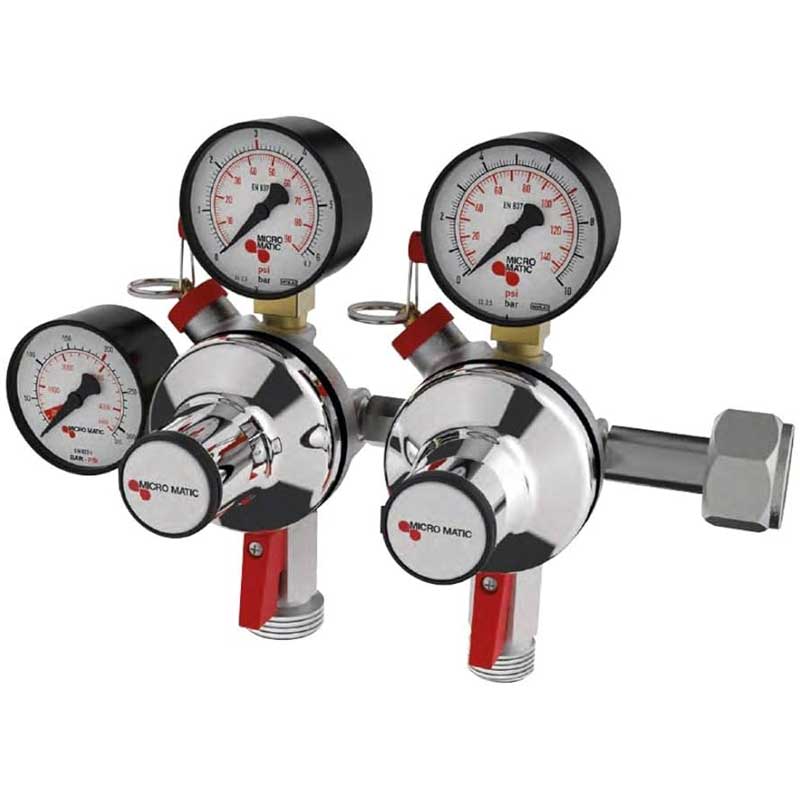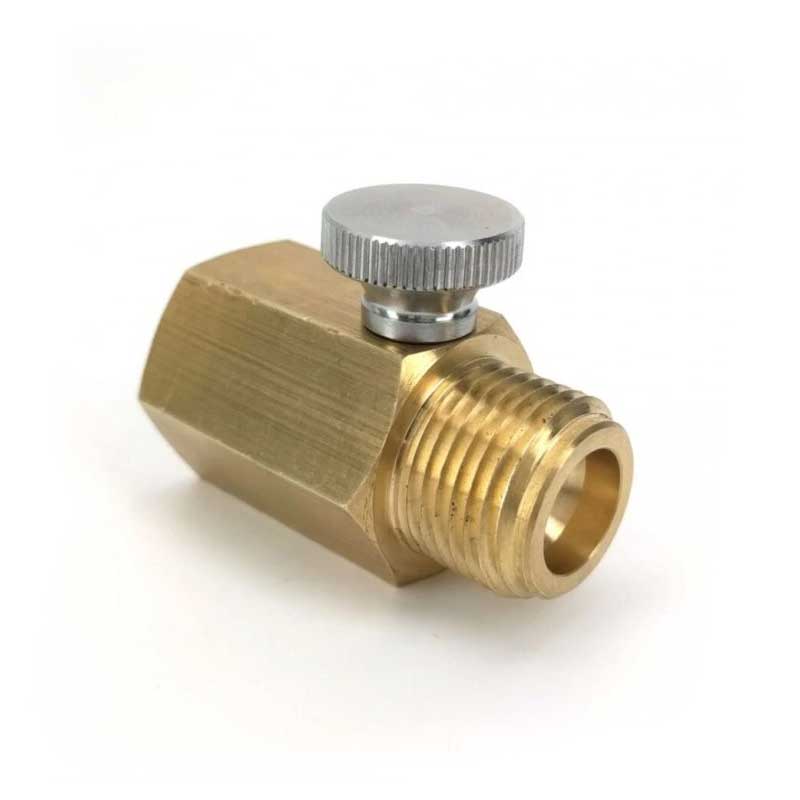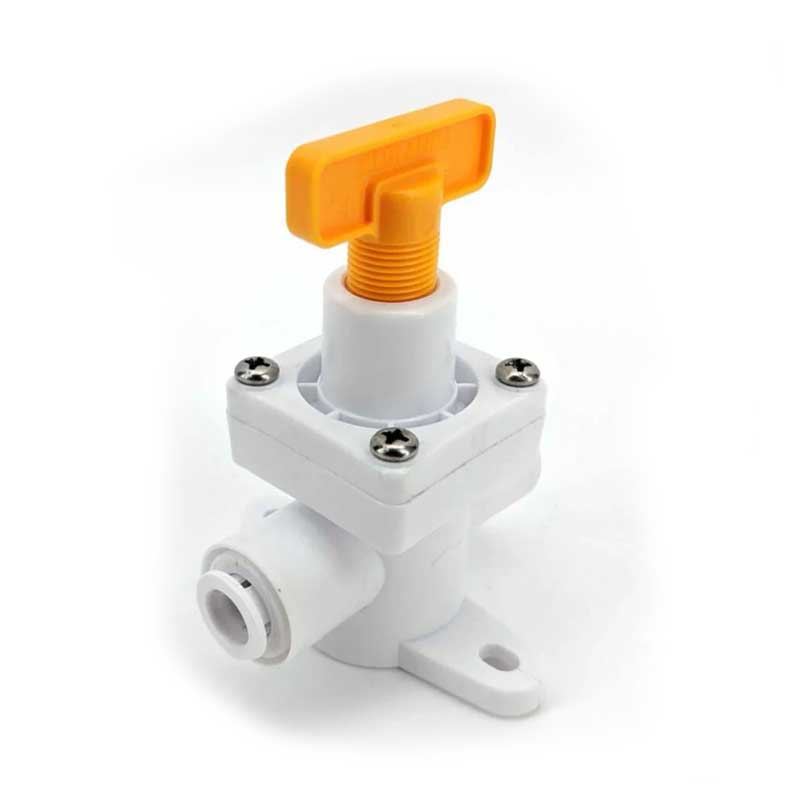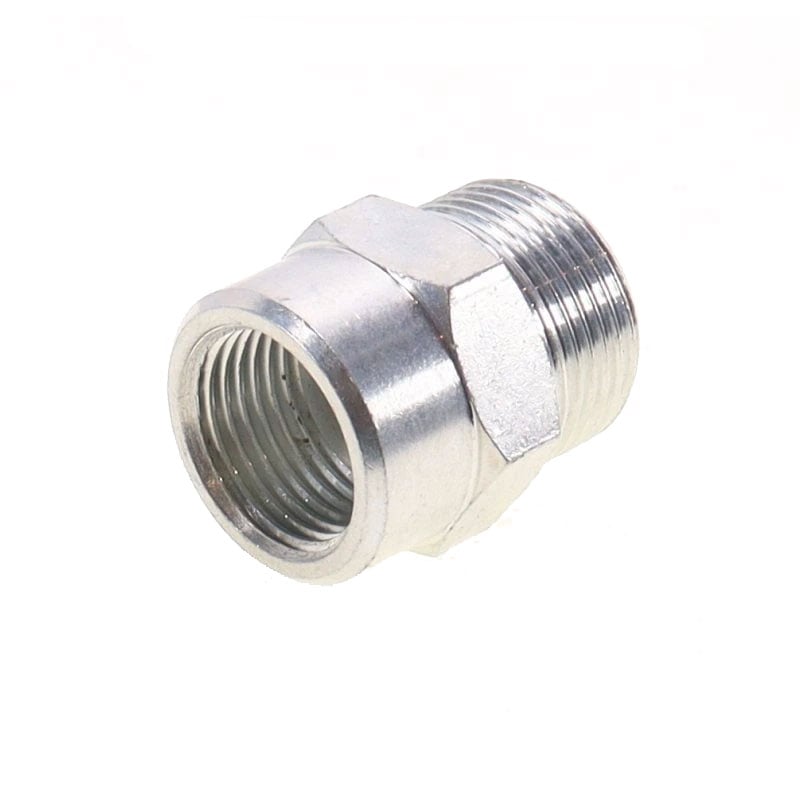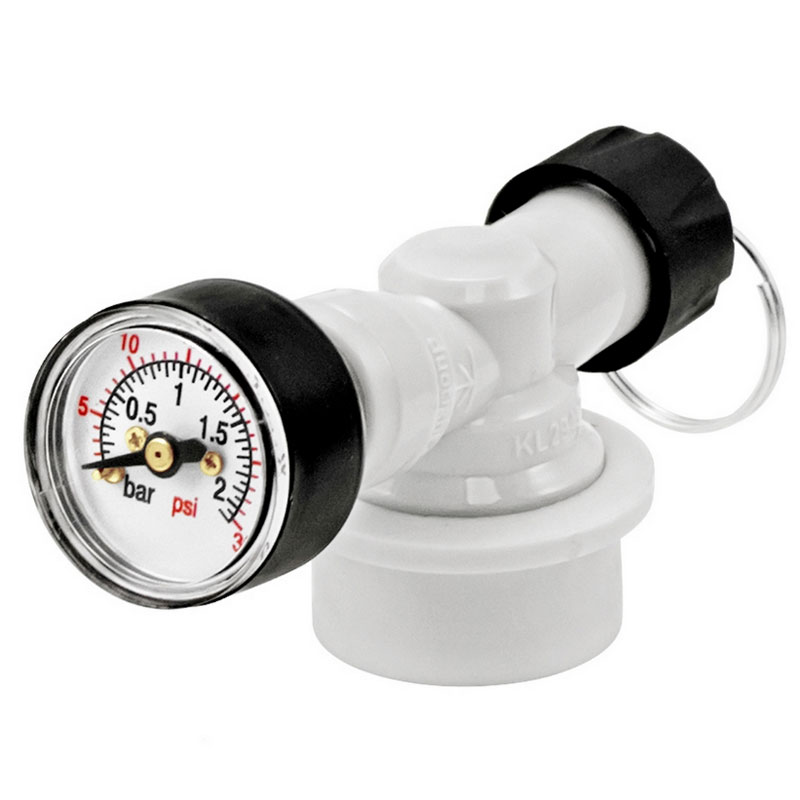COE | Oxygenation-carbonation equipment
Oxygenation-carbonation equipment for production of beer, cider, wine
Wine, cider or beer oxygenation improves a quality of fermentation.

What is Micro-Macro Oxygenation ?
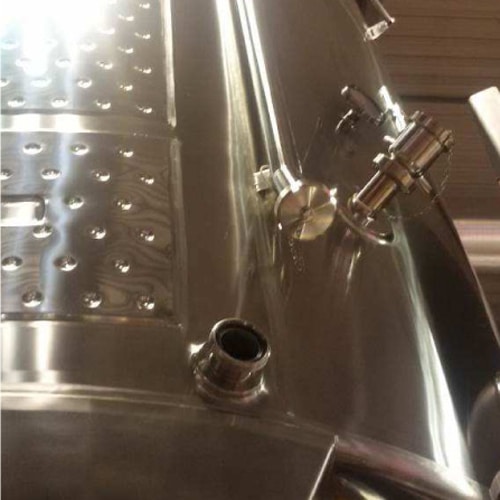 MACRO-OXYGENATION – during the beginning of the fermentation: Stengthens the yeast cells and their re-gernationed cells. Every brewer, cidermaker or winemaker fears a stuck fermentation due to weakening of the yeast cells. Macro-ox at this stage contributes to the development of strong yeast cells that can carry the fermentation well to a complete ending. Helps to stabilize the color of red wine and taste of beer.
MACRO-OXYGENATION – during the beginning of the fermentation: Stengthens the yeast cells and their re-gernationed cells. Every brewer, cidermaker or winemaker fears a stuck fermentation due to weakening of the yeast cells. Macro-ox at this stage contributes to the development of strong yeast cells that can carry the fermentation well to a complete ending. Helps to stabilize the color of red wine and taste of beer.
MICRO-OXYGENATION – after the fermentation: Improves wine aroma and flavor assimilating aging in a barrel, with more control over the Oxygen amounts. The oxygen binds the Tanins
(Phenols) stabilizing the color of the wine and giving it a fuller flavor and mouth-feel.
Wine Oxygenation can improves beer quality.
MACRO- OXYGENATION – during the beginning of the fermentation beer, cider or wine: Has the same beneficial effect on the yeast as in wine .
JET-OXYGENATION (CLIQUAGE) – A jet (spurt) of Oxygen into the tank at the beginning of the fermentation for similar effect as the Maco-Ox. Quantity controlled manualy by operator.
How it works ? Why to use the oxygenation process in the brewery / cideria ?
Macro- Oxygenation – during the beginning of the fermentation: Has the same beneficial effect on the yeast as in wine.
Macro- Oxygenation is done only in the beginning of the fermentation to strengthen the yeast when the start to multiply. Yeast consume oxygen and sugar as nourishment, and produce alcohol and heat. As long as there is oxygen in the tank – they will multiply aerobically and regenerate larger and stronger cells which can bring the fermentation to a better finish. The risk of the yeast cells getting tired and not finishing the fermentation complete is drastically reduced.
Yeast that do not get extra dosage of oxygen, very soon consume all the oxygen in the tank, and begin to multiply un-aerobically. The regenerated cells are smaller and weaker. At the same time they start producing alcohol which is a poison to them, so the regeneration is slower and weaker in the presence of alcohol without added oxygen.
The amounts of oxygen are up to the brewer himself to decide according to his experience, brew-batch size, type of beer and yeast he is using.
What do you need for use the beverage oxygenation process ?
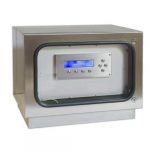
Oxygenation set I :
-
JOX-01 oxygenation jet or ACOS-02 oxygenation stone for each tank …from 1 to 16 pcs
-
COM-16 Cabinet – common case for installation up to 16 COM-1M modules, Cascadable … 1 or more pcs cascaded
-
COM-1M Module for COM-16 cabinet … 1 pc for each tank (up to 16 modules for one COM-16 cabinet)
or
 Oxygenation set II :
Oxygenation set II :
-
JOX-01 oxygenation jet or ACOS-02 oxygenation stone – for each tank
-
MTOM-1 – the tank oxygenation manager (OxyBoy or OxyMan) – for each tank
-
MTOM-1TSK – Temperature sensor kit for the oxygenation manager – for each tank
-
MTOM-1OBC – Cliquage – the optional upgrade only for OxyBoy
Oxygenation set III: Aeration candle – direct oxygenation to the wort pipe :
 Aeration, oxygenation and carbonation stones are using to :
Aeration, oxygenation and carbonation stones are using to :
- oxygenation of wort during transporting beer from the brewhouse to the fermentation tank after whirlpooling wort
- saturation of drinks by O2, CO2 or air in the tanks or pipe routes.
Carbonation of finalized beverages in tanks
A carbonated drink is a drink that bubbles and fizzes with carbon dioxide gas. The process by which the gas dissolves in the drink is known as carbonation. This process can occur naturally, such as in naturally carbonated mineral water that absorbs carbon dioxide from the ground, or by man-made processes, as is the case in most soft drinks and soda waters. This involves pumping carbon dioxide into the drink at high pressure, then sealing the container. Since the solubility of carbon dioxide is less at lower pressure, the dissolved gas escapes as bubbles when the container is opened and the pressure is relieved.
The carbonation process is provided using the carbonation stone – a special jet inside the tank with porous difuser (made of sintered stainless steel AISI 304 or ceramic stone).
We recommend our carbonation stones for the carbonation of beverages in tanks :

We offer these oxygenation and carbonation equipment :
- MK4-CO2-21 : Pressure reducing valve for CO2 bottles, W21,8×1/14″, 7 bar (KegLand KL07428)
 MK4 KegLand carbon dioxide reducing valve with manual pressure control. CO2 cylinder thread W21.8 x 1/14". Read more »
MK4 KegLand carbon dioxide reducing valve with manual pressure control. CO2 cylinder thread W21.8 x 1/14". Read more » - ILC-8000 : Compact automatic in-line carbonator 8000L/hr
 Perfect solution of the fully automatic inline (flow-through) beverage carbonator in one compact system. Flow capacity up to 8000 liters per hour. Machine designed to saturation of a drink with carbon dioxide before its filling into sales containers. Read more »
Perfect solution of the fully automatic inline (flow-through) beverage carbonator in one compact system. Flow capacity up to 8000 liters per hour. Machine designed to saturation of a drink with carbon dioxide before its filling into sales containers. Read more » - PRV-DT4080 : Pressure reducing valve DuoTight for gas or liquid with manometer, 0-4.1 bar (KegLand KL15035)
 DuoTight (John Guest) pressure regulator with manometer 0-4.1 bar. Intended for connection to an 8 mm gas hose (CO2, N2, Biogon ....) The pressure regulator can also be used to reduce liquid pressure. Read more »
DuoTight (John Guest) pressure regulator with manometer 0-4.1 bar. Intended for connection to an 8 mm gas hose (CO2, N2, Biogon ....) The pressure regulator can also be used to reduce liquid pressure. Read more » - RV-R2134 : Reducer BSP G 3/4″ (female) to W21.8×1/14″ (male) for CO2 pressure cylinders | Brass
 Reducer BSP G 3/4" (female) to W21.8x1/14" (male) for CO2 pressure cylinders. For compatibility of CO2 reduce valves with both standards. Material : Brass Gaskets are included. We recommend to order the reducer if you are not sure which standard for the CO2 pressure cylinders is usual in your country. Read more »
Reducer BSP G 3/4" (female) to W21.8x1/14" (male) for CO2 pressure cylinders. For compatibility of CO2 reduce valves with both standards. Material : Brass Gaskets are included. We recommend to order the reducer if you are not sure which standard for the CO2 pressure cylinders is usual in your country. Read more » - RVM-CO2-DP34 : Premium PLUS MICROMATIC reducing valve for pressure bottles with CO2 gas, for 2 different outlet pressures, G 3/4″, 7 bar
 Reducing valve for CO2 gas with the possibility of regulating 2 independent pressures at the output. Suitable for classic pressure cylinders with CO2 with G3/4 thread. Read more »
Reducing valve for CO2 gas with the possibility of regulating 2 independent pressures at the output. Suitable for classic pressure cylinders with CO2 with G3/4 thread. Read more » - RV-TR21W21 : Reducer Tr21 (female ACME ) to W21.8 (male) for CO2 Sodastream pressure cylinders | Brass (KL15578W)
 Reducer Tr21 (female ACME ) to W21.8x1/14" (female) for CO2 Sodastream pressure cylinders. For compatibility of CO2 reduce valves with the CO2 Sodastream pressure cylinders. Material : Brass, stainless steel reduce valve. Read more »
Reducer Tr21 (female ACME ) to W21.8x1/14" (female) for CO2 Sodastream pressure cylinders. For compatibility of CO2 reduce valves with the CO2 Sodastream pressure cylinders. Material : Brass, stainless steel reduce valve. Read more » - PRV-DT0080 : Pressure reducing valve DuoTight for gas or liquid without a manometer (KegLand KL02172)
 DuoTight (John Guest) pressure regulator without a manometer. Intended for connection to an 8 mm gas hose (CO2, N2, Biogon ....). The pressure regulator can also be used to reduce liquid pressure. Read more »
DuoTight (John Guest) pressure regulator without a manometer. Intended for connection to an 8 mm gas hose (CO2, N2, Biogon ....). The pressure regulator can also be used to reduce liquid pressure. Read more » - BQC-10 : Blichmann QuickCarb on-line beer carbonator for kegs, kegmenters, fermzillas, cuvettes
 The Blichmann QuickCarb beer carbonator for Kegmenters, Fermzillas and Cuvettes is an unique patent pending beer carbonator for the on-line carbonation of beer, cider or other cold beverages directly in kegs. The carbonator uses a simple circulating pump and a unique stainless steel diffusion stone to carbonate your beer precisely and quickly, with no chance of accidentally overcarbonating your beer! Read more »
The Blichmann QuickCarb beer carbonator for Kegmenters, Fermzillas and Cuvettes is an unique patent pending beer carbonator for the on-line carbonation of beer, cider or other cold beverages directly in kegs. The carbonator uses a simple circulating pump and a unique stainless steel diffusion stone to carbonate your beer precisely and quickly, with no chance of accidentally overcarbonating your beer! Read more » - RV-R3421N : Reducer BSP 3/4″M (male) to W21.8 x 1/14″F (female) for CO2 pressure cylinders | Nickel plated steel
 Reducer BSP G 3/4" (male) to W21.8x1/14" (female) for CO2 pressure cylinders. For compatibility of CO2 reduce valves with both standards. Material : Nickel plated steel. We recommend to order the reducer if you are not sure which standard for the CO2 pressure cylinders is usual in your country. Read more »
Reducer BSP G 3/4" (male) to W21.8x1/14" (female) for CO2 pressure cylinders. For compatibility of CO2 reduce valves with both standards. Material : Nickel plated steel. We recommend to order the reducer if you are not sure which standard for the CO2 pressure cylinders is usual in your country. Read more » - PRV-LPBL2B : Pressure valve (low-profile Spund G2) BallLock/DuoTight for gas with manometer, range 0-2 bar (KegLand KL29438)
 Low-profile pressure valve (with range of 0-2 bar) with a manometer and the BallLock/DuoTight connection. Optimalized to use with the fermentation slim-kegs and kegerators. Delivered with the simple analog manometer which is easily replaceable for a Kegland digital manometer or pressure relief valves (up to 6.9 bar). Kegland product code : KL29438. Read more »
Low-profile pressure valve (with range of 0-2 bar) with a manometer and the BallLock/DuoTight connection. Optimalized to use with the fermentation slim-kegs and kegerators. Delivered with the simple analog manometer which is easily replaceable for a Kegland digital manometer or pressure relief valves (up to 6.9 bar). Kegland product code : KL29438. Read more »
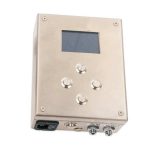 Oxygenation set II :
Oxygenation set II :